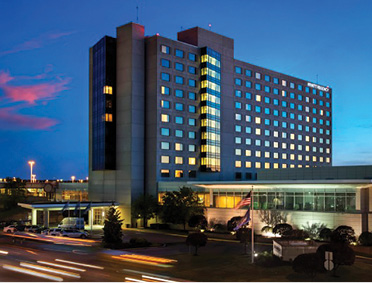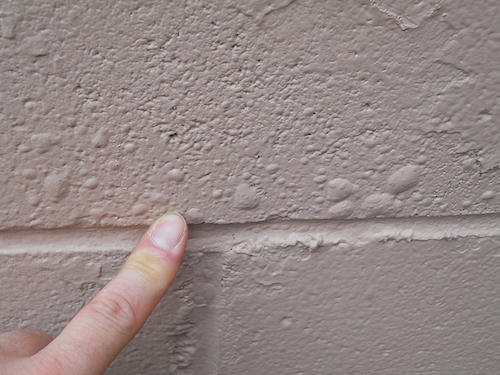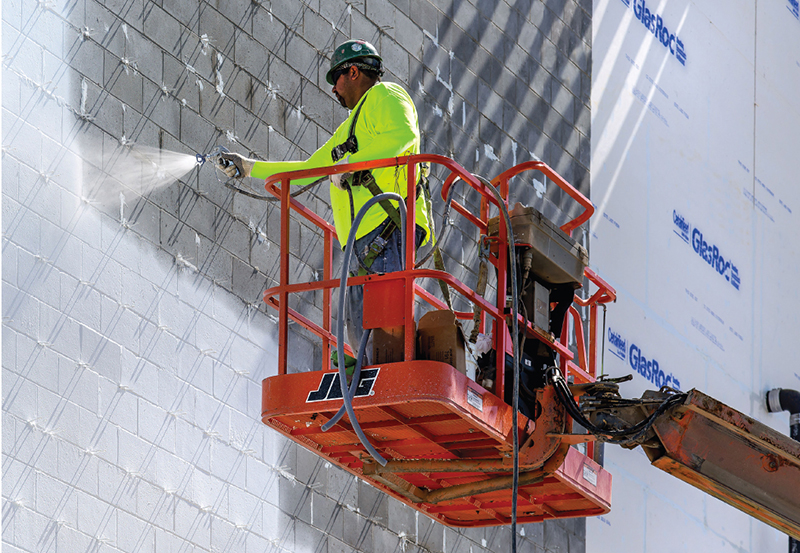MONDAY, SEPTEMBER 25, 2017
On Tuesday (Sept. 26), Durability + Design is devoting a full day to helping professionals stay on top of issues relating to an understanding of hygrothermics, exterior wall coatings and fluid-applied air barriers.
The inaugural Material Selection Conference, sponsored by W.R. Meadows and DuPont Tyvek, will take place 8 a.m. to 5:30 p.m., at the Hyatt Regency Pittsburgh International Airport. There is still time to register for this event!
“This conference will help owners, architects and contractors better understand the impact of permeance on exterior wall coatings; gain knowledge on how to determine the performance and cost effectiveness of liquid-applied air barriers; and gain critical firsthand insights of the strengths and weaknesses of specific coating brands," said Brion Palmer, CEO of Technology Publishing Co., which publishes D+D.

 |
| © Hyatt Corporation |
|
The inaugural Material Selection Conference, sponsored by W.R. Meadows and DuPont Tyvek, will take place 8 a.m. to 5:30 p.m., at the Hyatt Regency Pittsburgh International Airport. |
Divided into two half-day sessions, the conference features a morning curriculum concentrating on the capability of coatings to manage moisture intrusion into exterior walls, and an afternoon program examining the ability of liquid-applied air barriers to limit heat, air and moisture transport through walls.
Panel discussions in each session will also give attendees access to information that wouldn’t otherwise be available in one place as manufacturer representatives will explain why their products are the preferred solution in various scenarios—a stark contrast from the generic presentations conference-goers typically see.
Registrants can opt to pursue the full slate of classes or register for just the half day that best applies to them. Full-day participation qualifies attendees for eight AIA learning credits; half-day attendance qualifies for four AIA learning credits.
SESSION 1: WALL COATING PERFORMANCE
Introduction to WUFI Software | 8-9 a.m.
Presenter: Andre Desjarlais, Oak Ridge National Laboratory
Chances are you’ve heard about WUFI, a software program used for evaluating heat and moisture movement in building envelopes—but how does it work?
“Hygrothermal modeling using WUFI increases the model user’s capabilities of understanding and predicting how the building envelope component will perform under the highly transient conditions it will be exposed to in real life,” says Andre Desjarlais, program manager for the Building Envelope Systems Research Group at Oak Ridge National Laboratory (ORNL).
Desjarlais will cover basic building envelope moisture design principles and how WUFI Pro uses heat and mass transfer fundamentals, along with the necessary input data, to predict hygrothermal performance and make mold-growth predictions.
Participants will see a demonstration of the software and walk away knowing how to perform transient heat and moisture calculations, key material properties that govern heat and mass transport, and how to translate software output into practical results.
The Effect of Permeance on Exterior Wall Coating Performance | 9-10 a.m.
Presenter: Kevin Brown, KTA-Tator Inc.
A number of professionals might have predictions on how many times a building can be repainted, but what is that forecast based on—and is it realistic?
 |
| KTA Tator Inc. |
|
To illustrate the process of determining the number of times a building can be repainted before permeance reduction may become problematic, Brown will share thermodynamic modeling results for five identical buildings in five different parts of the country. |
Kevin J. Brown, technical director for KTA-Tator, will tackle that question, exploring how additional coats of paint applied to the exterior of commercial buildings impact the breathability of the film, as well as the dangers of the resulting trapped moisture.
To illustrate the process of determining the number of times a building can be repainted before permeance reduction may become problematic, Brown will share thermodynamic modeling results for five identical buildings in five different parts of the country. In this way, he will illustrate the value of thermodynamic modeling when specifying coatings for building walls, how location influences coating selection and repainting, and the potential long-term cost savings of selecting the correct coating system for the geographical location.
Panel Discussion: Performance on Exterior Walls of Specific Coating and Water Repellent Brands | 10:15 a.m.-12:15 p.m.
Moderator: Kenneth A. Trimber, KTA-Tator Inc.
Eight building scenarios involving the use of coatings and water repellents on CMUs will be presented to a panel that includes Jennifer Crisman, The Euclid Chemical Company; Chuck Duffin, Sto Corp.; Michael Edison, Edison Coatings; Ed Telson, Sto Corp.; Al Morris, Prosoco; Christopher Perego, BASF Corporation; and Tom Tipps, KEIM Mineral Coatings of America.
Panelists will identify the benefits of their product(s) in addressing the needs of a variety of buildings that present a range of challenges. Scenarios include:
SESSION 2: AIR LEAKAGE AND AIR BARRIER PERFORMANCE
Modeling Building Envelope Energy Efficiency and Developing a Web-Based Energy Savings Calculator for Building Envelope Air Tightness | 1:15 -2:15 p.m.
Presenter: Andre Desjarlais, ORNL
Uncontrolled heat, air and moisture transfer through the building envelope has a significant impact on energy usage—but is it possible to estimate the savings that can be achieved by increasing air tightness?
 |
| Dow Corning Corporation |
|
From this session, attendees will better understand how whole building computer simulation tools handle conduction and air tightness of buildings, a methodology for developing a database of simulation runs to extract air tightness benefits, and more. |
A simple-to-use online energy calculator tool allows building professionals to estimate the energy and monetary savings associated with the deployment of an air barrier system. Desjarlais will explain the use of this calculator, developed by ORNL, along with quality assurance and installation requirements for liquid-applied air barriers.
From this session, attendees will better understand how whole building computer simulation tools handle conduction and air tightness of buildings, a methodology for developing a database of simulation runs to extract air tightness benefits, and more.
Quality Assurance and Installation Requirements for Liquid-Applied Air Barriers | 2:15-3 p.m.
Presenter: David de Sola, 3iVE LLC
A poorly executed material application can undermine even the best material’s ability to provide a benefit, says presenter David de Sola, a LEED-accredited professional specializing in building design and construction and founding principal of 3iVE LLC.
What are the key environmental and application challenges when designing and constructing a robust air barrier for a building envelope? What observation and testing protocol features can help verify that air- and vapor-performance objectives have been met? De Sola will address these questions, suggest ways to integrate design and exterior performance goals and review basic building science principles related to materials and assemblies.
“Air barriers are playing a growing role in new buildings in terms of controlling energy use and helping to improve indoor air quality and environmental separation,” de Sola notes. “I’m looking forward to highlighting the state of the industry with respect to materials as well as design and field considerations, and shedding some light on this typically hidden-away performance layer.”
Panel Discussion: Fluid-Applied Air Barriers Product and Installation Considerations | 3:30-5:30 p.m.
Moderator: David de Sola, 3iVE LLC
Eight more building scenarios, this time involving the use of fluid-applied air barriers, will be presented to a panel that includes Chuck Duffin, Sto Corp.; Bill Dunn, GCP Applied Technologies; Tyson Lodge, Sto Corp.; Benjamin Meyer, DuPont Protection Solutions; Todd Skopic, Henry Company; and Russell Snow, W.R. Meadows.
Supplier representatives will provide technical insights for decision-making when it comes to different building requirements, such as:
For more information, or to reserve your spot, click here.
Tagged categories: Air barriers; Building Envelope; Conferences; Education; Good Technical Practice; Maintenance + Renovation; Permeability